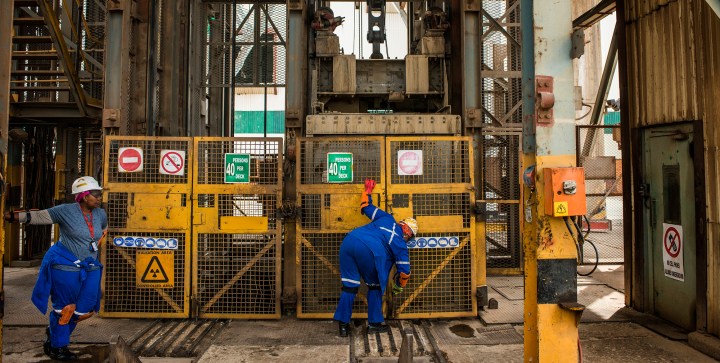MINING INDABA
Fall-of-ground fatalities at SA mines drop, but regression on safety front a concern

The South African mining industry has made strides in preventing deaths from fall-of-ground incidents. But the industry’s safety record is still regressing after decades of improvement, the Mining Indaba heard on Wednesday.
First, the good news. In the first quarter of this year, no South African mine worker in gold and platinum was killed in a fall-of-ground (FOG) incident, a first. One was killed in a FOG at a coal mine, which is a rare event.
“This is the first time ever our gold and PGM [platinum group metal] mines have not had a fall-of-ground fatality in the first three months of the year. This impressive record is extending into the fifth month in these two sectors.
“These things don’t just happen. A lot of effort goes into these safety initiatives by companies and organised labour,” says Dr Sizwe Phakathi, the head of safety at the Minerals Council South Africa.
Last year there were six FOG-related fatalities in the first quarter of the year.
But the bad news is that a worrying regression on the safety front in the industry continues. A weekend incident at Harmony Gold’s Kusasalethu mine, in which four workers were killed by a mudslide, has brought the number of South African mine workers killed at work in 2022 to 19 to date, the Minerals Council said at the Mining Indaba on Wednesday. At this point in 2021, 18 mine workers have been killed.
In 2019, a record low of 51 South African mine workers were killed on the job – still almost one a week. In 2020, that number spiked to 60 and it reached 74 in 2021.
Minerals Council CEO Roger Baxter told a media briefing at the indaba that the sector was taking a number of initiatives to improve its safety record.
These include “stopping unauthorised or uncontrolled access to mining areas, which happens even in operational mines”. Ensuring that incentives or bonuses do not encourage reckless behaviour is another safety initiative.
In terms of FOGs, the industry has made strides in recent years in reducing such incidents with measures such as rolling out safety netting at the face where rock-drill operators carry out their arduous work.
“The number of falls-of-ground fatalities has fallen to an annual average of 24 in the 2016-2020 period from an average of 111 a year between 2001-2005, a 78% improvement,” the Minerals Council said at the indaba.
But many deaths in the sector are related to transport incidents – there are many big machines moving humans and ore around – and in the past few months there have been a couple of terrible mudslides.
For the industry, preventing fatal accidents is clearly the right thing to do. And in an age when environmental, social and governance issues are all the rage, mining companies are under pressure from investors to improve their safety performance. Fund managers don’t want their returns drenched in blood.
Meanwhile, the slashing of the number of FOG incidents and deaths is clearly welcome. The industry now needs to get a grip on other areas of concern. DM/BM
[hearken id=”daily-maverick/9472″]
















 Become an Insider
Become an Insider
Comments - Please login in order to comment.